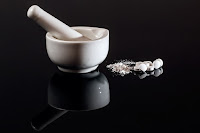Tissue engineered skin substitutes are what modern medicine is looking towards for healing damaged skin. These substitutes may be cellular and/or acellular in nature and they act by releasing cytokines and other factors that aid cellular growth around the wounded area. These skin substitutes are usually artificial and are derived from real tissue, either human or non-human. The composition of a tissue engineered skin substitute includes cells and extracellular matrix, which form a premeditated formation of cells and their matrices. The most common areas of use for tissue engineered skin substitutes are in lacerations, vascular ulcers, diabetic ulcers, and burns.
Browse Research Report: http://www.transparencymarketresearch.com/tissue-engineered-skin-substitute.html
Biological skin substitutes are considered as the best form of medical intervention while treating the above skin conditions. They are safe, easy to use, and provide the fastest way to heal or repair. The global tissue engineered skin substitute market is exhibiting an incredible CAGR of 17.20% between 2015 and 2023. The market’s recorded value of more than US$0.9 bn in 2014 is expected to grow to US$3.8 bn by 2023.
What’s Making the Tissue Engineered Skin Substitute Market Tick?
Right now, the primary driver of the global tissue engineered skin substitute market is the sheer number of patients that are in need of tissue engineered skin substitutes. This includes patients suffering from vascular ulcers and diabetes, along with the growing geriatric population. Medicine is steadily and surely moving towards the preferable minimally invasive surgeries and surgical tools. This creates the perfect stage for tissue engineered skin substitute in terms of use and R&D. All these factors are proving beneficial for healthcare institutes in Asia Pacific, as they are seen as a more affordable location to undergo surgeries, making the region the largest player in the global medical tourism industry.
The scenario for the global tissue engineered skin substitute market is not all progressive, however. This field of medicine does show a few weaknesses, the most important one being the rather accelerated rate at which diseases could be transferred from one infected tissue sample to a patient. There is a high risk of infection in the post-implementation stage, especially with allogeneic skin substitutes. Another issues the market faces today is the lack of promising reimbursement schemes.
Acellular Skin Tissue Leading Tissue Engineered Skin Substitutes Market
The global tissue engineered skin substitute market is led by substitutes of acellular skin types in terms of the type of tissue engineered. It was the largest segment in the global tissue engineered skin substitute market in 2014 and is also expected to grow at the fastest rate in the near future. The key reasons for the segment’s growth are its low cost, high demand, and easy availability. According to a study, more than half the patients in the U.S. who are undergoing tissue engineered skin substitute surgeries prefer skin surgeries with acellular matrix.
Browse Press Release: http://www.transparencymarketresearch.com/pressrelease/tissue-engineered-skin-substitute.htm
Prosthetic Skin Could Change the Way we Perceive Artificial Limbs
Scientists are developing new artificial materials that can impart the sense of touch to a prosthetic. This engineered skin will enable a user to feel textures, temperatures, and even the different states of a surface. Stanford University scientists are on the verge of creating this artificial skin, which will allow people wearing prosthetics to feel the various sensations associated with skin.
The top players have dominated the tissue engineered skin substitute market, including Integra LifeSciences Corporation, 3M Health Care, and Medtronic. These companies strive to create the best in biotech and provide us with the latest development in the tissue engineered skin substitute market.

No comments:
Post a Comment